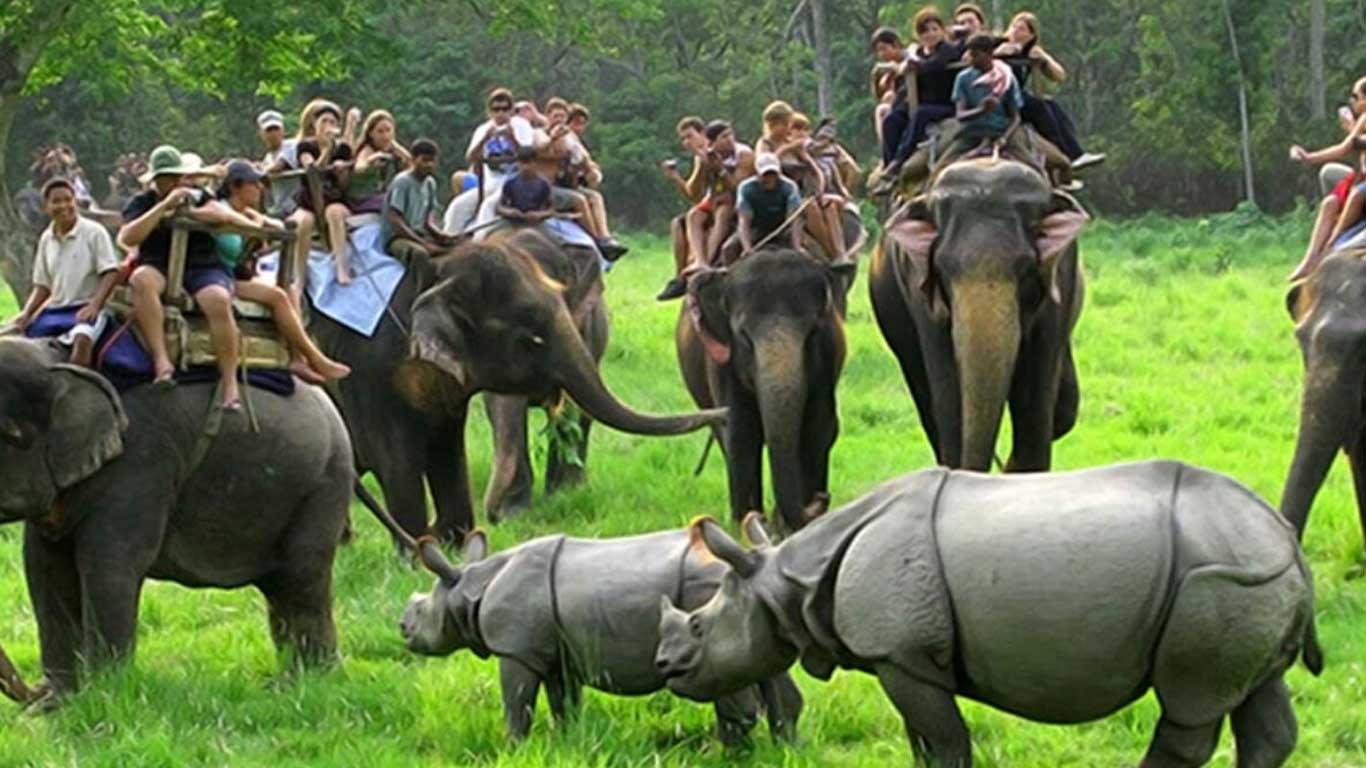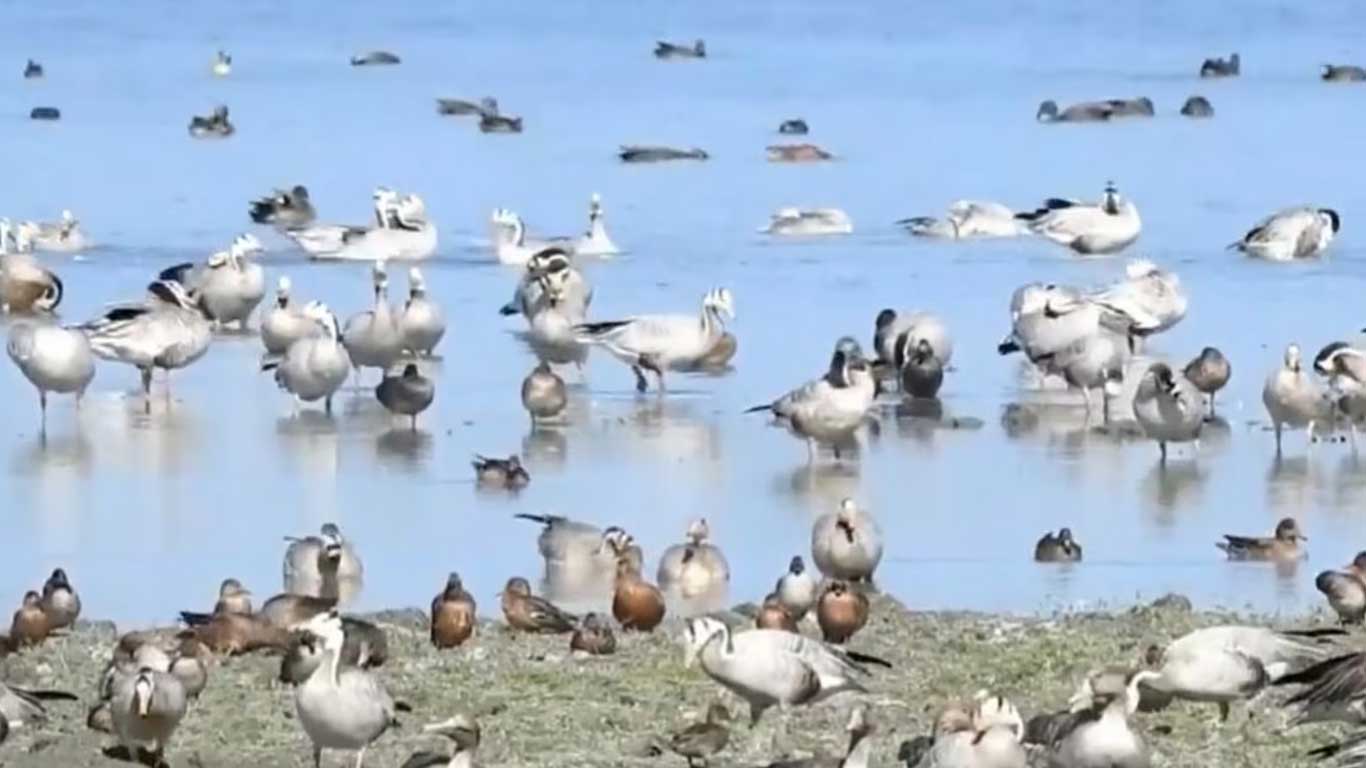Kaziranga National Park
A UNESCO World Heritage Site and a tourist-friendly and popular reserve, Kaziranga is internationally known for its importance as one of the last undisturbed habitats of the Great Indian one-horned rhinoceros. It is also home to over 70 per cent of the world’s swamp or wild buffalo population. The rare swamp deer is also found in plenty here. Kaziranga sustains over a thousand wild elephants and 450 species of wetland, grassland and woodland birds, of which 18 are globally threatened.
Kaziranga, in the language of the Karbi tribe, means ‘where the mountain goat has water’. It was a swampy, almost inaccessible wetland, used as hunting grounds by local tribes and shikaris up to 1905 when it was declared a reserve forest. Flat grasslands with streams and large, landlocked water bodies constitute Kaziranga’s terrain; tall elephant grass covers most of the land. Kaziranga spreads over 480 sq km; it stretches east to west with the Brahmaputra as its northern boundary and is fringed by the Karbi Hills in the south. The south of the park is very easily accessible as NH37 runs right through it. This area has many villages, fields and vast tracts of tea estates.
Safaris
The jeep and elephant safaris are absolute must-dos. There are three tourist routes; Kohora, Baghori and Agaratoli. Forest department vehicles are generally not available; jeeps can be hired at the Kohora Chowk.
Kohora Range
The longest of the tourist routes, a 3 to 4-hour safari in this range offers almost a complete sense of Kaziranga and its wildlife. You may see rhinos, elephants and wild buffaloes. A couple of huge ficus trees here often have majestic pied hornbills feeding on them; owls, serpents and fishing eagles peer through wooded stretches, monitor lizards blend into tree trunks, and sometimes elephants and rhinos lurk in the tall grass. Turtles sun themselves on branches lodged in the water, otters frolic in a pond and you can catch colourful minivets or Khaleej pheasants.
The large beels may have greylag geese feeding furiously, or rhinos wallowing in the water. Catching elephants at play in these beels is a most rewarding experience. Domestic elephants at Mihimukh Camp are given a bath in the nearby stream, in the afternoons at about 3 pm. Tiger sightings are uncommon, but not unheard of.
Boghori Range
This circuit, in the western end of the park, is known for guaranteed sightings. Near its strategic watchtower, shrikes prance about and herds of elephants graze within clear viewing distance.
Head to the watchtower before sunset to view the large clearing beyond the water, bathed in a golden light. You may spot swamp deer, hog deer, buffaloes, rhinos and wild elephants.
Panbari Reserve forest
A few kilometres east of Kohora, this 10 sq km patch is one of Kaziranga’s few remaining highland stretches along the Karbi Anglong foothills that has not been eaten into by tea estates. The canopy is thick. The road is a rough ride but is worth it. The terrain has winding streams and lots of green. One can spot hoolock gibbons high up in the canopy and, if you’re lucky, you could see a ‘cat langur’. Birds are aplenty here and you may come across elephants. For panbari, you have to hire a guard from Kohora. The trip can take up to 2.5 hours.
Agaratoli Range
This is the easternmost of the three routes, 21 km from Kohora Base. This range is slightly more wooded than the other two and animal sightings are slightly less frequent. Birds, however, are abundant.
Forest guards report tiger sightings here quite often and there’s a pelican colony towards the end of the circuit.
Plantation and village tours
Besides the wildlife and birds, your options here include a visit to a nearby tea plantation and factory and a trip to a local Karbi and Mising village.
Humro Tours
-
Address:19 MN Sarkar Road, Mahananda para, near Sevoke More, Siliguri 734001 ,Siliguri, Darjeeling, State : West Bengal, Country : India. PIN : 734001
-
Call Us at:
+919733000592; 9733000594; 9733300676; 9733300686 -
Mail Us:
info@easthimalaya.in



